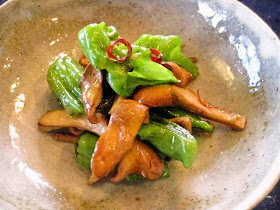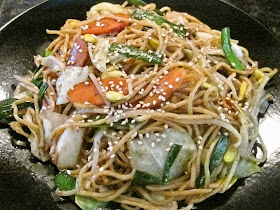This is a reduced-sodium version of the original koebi to tofu no mabo harusame recipe of October 2011. By cutting back on soy sauce, partially replacing tobanjan chili bean paste with taka no tsume red chili peppers and using Shaoxing wine and kurozu brown rice vinegar, this is milder and lighter while still being aromatic and clearly spicy. Some simple techniques are involved to bring out the most of the seasonings below.
1/2 of recipe:
298 calories; 17.7 g protein; 11.6 g fat; 28.1 g carbohydrate; 26.8 g net carbs; 430 mg sodium (with 50% reduced-sodium soy sauce; 697 mg with regular soy sauce); 75 mg cholesterol; 1.3 g fiber
1/2 of recipe:
298 calories; 17.7 g protein; 11.6 g fat; 28.1 g carbohydrate; 26.8 g net carbs; 430 mg sodium (with 50% reduced-sodium soy sauce; 697 mg with regular soy sauce); 75 mg cholesterol; 1.3 g fiber

















































